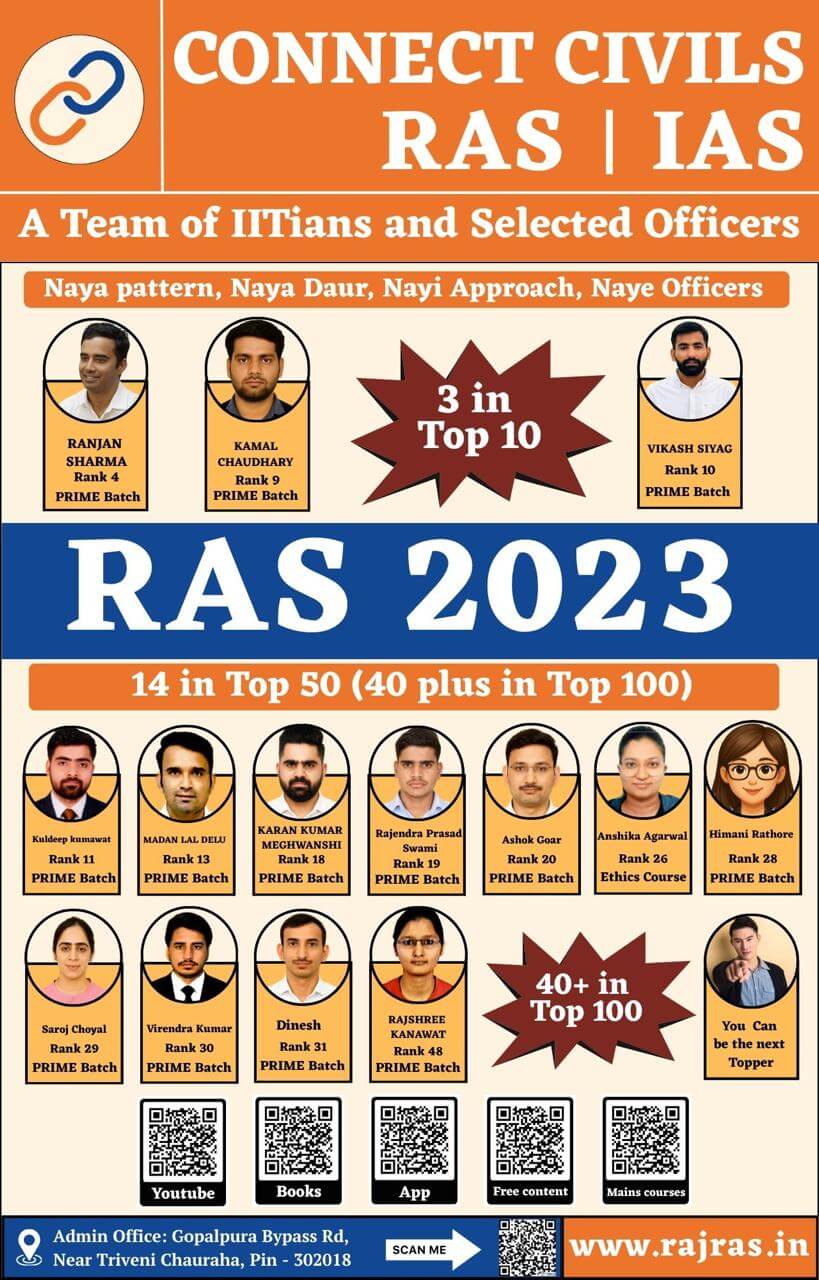RAS Mains answer writing tips plays a decisive role in scoring well and securing a good rank. Beyond knowledge, it tests a candidate’s ability to present ideas clearly, concisely, and within the word limit. With the right structure and practice, effective answer writing can significantly boost your overall performance.
Connect Civils – KALAM Answer Writing Programme
1. How to Attempt Questions
- Underline the question to identify key parts.
- Address each part equally; don’t ignore sub-questions.
- Use points instead of sentences for clarity.
- Include keywords, relevant data, and facts.
2. Diagram Making
- Use flowcharts, maps, subject-specific diagrams, pie charts, hierarchy charts, Venn diagrams, vicious cycles.
- Make tables to highlight differences.
- Diagrams should be clear, labeled, and relevant.
3. Analytical Questions
- Identify the topic from the syllabus.
- Recall all micro-dimensions of the topic.
- Break the question and connect with your knowledge.
- Structure the answer logically and systematically.
4. Attempting 2-Marker Questions
- Focus on exactly what is asked; avoid bluffing.
- Write facts and key points.
- Provide 4–5 concise points.
- Aim to hit the bull’s eye.
5. Attempting 5-Marker Questions
- Can write slightly broader but related content.
- Include facts first, then explanations.
- Provide 7–8 points.
- Be concise yet comprehensive.
6. Attempting 10-Marker Questions
- Structure: Introduction → Body → Conclusion.
- Introduction: Use definition, data, slogan, historical background, quote of personalities, irony, current affairs, or reports from organizations.
- Body: Write 12–15 points with headings. Underline keywords, data, and facts.
- Conclusion: Link back to introduction; can include quotes, data, slogans, SDG targets.
7. Avoid Common Mistakes
- Read the question carefully.
- Don’t bluff in factual questions.
- Avoid paragraph format; use pointwise format.
- Write within prescribed margins.
- Cover all aspects of the question.
- Underline and box important points.
- Keep intro and conclusion concise (2–3 lines).
- Use relevant diagrams wherever required.
8. Value Addition Techniques
- Use structured approaches like CHESSIGAP, LEQORPKSSCSAD, etc.
- These frameworks enhance the quality and depth of answers.
9. Time Management
- 2-mark questions: 2 minutes
- 5-mark questions: 4 minutes
- 10-mark questions: 8–9 minutes
- Follow this to practice exam-like conditions and improve speed.
Following this Answer Writing Programme helps create high-quality, structured answers that stand out among peers and increase your chances of selection.

